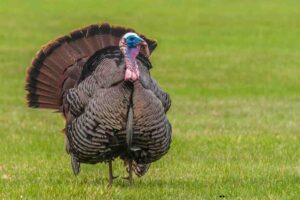The white-tailed eagle (Haliaeetus albicilla), often referred to as the “sea eagle,” is one of the largest birds of prey in Europe and a symbol of strength and majesty in the avian world. Known for its impressive wingspan, this eagle is a remarkable sight as it soars gracefully through the skies. In this article, we will explore the wingspan of the white-tailed eagle, its significance, and various aspects of its life that contribute to its status as a top predator.
Understanding the White Tailed Eagle Wingspan

The wingspan of the white-tailed eagle is a defining characteristic that sets it apart from other birds of prey. On average, The wingspan of an adult white-tailed eagle ranges from 1.8 to 2.4 meters (approximately 5.9 to 7.9 feet). This impressive measurement allows the eagle to glide effortlessly over vast distances while searching for food.
Factors Influencing Wingspan
Several factors can influence the wingspan of the white-tailed eagle, including:
| Factor | Description |
|---|---|
| Age | Younger eagles may have smaller wingspans compared to adults. |
| Sex | Female white-tailed eagles are generally larger than males, often resulting in a greater wingspan. |
| Geographical Location | Eagles from different regions may exhibit variations in size due to environmental factors. |
Understanding these factors is essential for appreciating the diversity within the species and how they adapt to their environments.
The Importance of Wingspan in Flight

The wingspan of the white-tailed eagle plays a crucial role in its ability to fly and hunt. A larger wingspan provides several advantages:
1. Soaring Ability
The white-tailed eagle is known for its soaring flight, which allows it to cover large areas while conserving energy. The expansive wingspan enables the eagle to take advantage of thermal updrafts, allowing it to glide effortlessly without flapping its wings excessively.
2. Maneuverability
While a larger wingspan aids in soaring, it also contributes to the eagle’s maneuverability. The broad wings allow for sharp turns and quick adjustments in flight, which are essential when hunting or evading potential threats.
3. Hunting Efficiency
The wingspan of the white-tailed eagle is instrumental in its hunting strategy. With its keen eyesight and powerful wings, the eagle can spot prey from great heights and swoop down with precision. The wings also provide the necessary lift to carry heavy prey, such as fish or small mammals, back to its nest.
Habitat and Distribution of White Tailed Eagle
The white-tailed eagle is primarily found in coastal regions, large lakes, and rivers across Europe and parts of Asia. Its habitat preferences are closely linked to its hunting habits and the availability of food sources.
Preferred Habitats
| Habitat Type | Description |
|---|---|
| Coastal Areas | White-tailed eagles thrive in coastal regions where they can hunt for fish and other marine life. |
| Lakes and Rivers | Freshwater bodies provide abundant food sources, including fish and waterfowl. |
| Forested Areas | Eagles often nest in tall trees near water sources, providing safety for their young. |
The availability of suitable habitats is crucial for the survival of the white-tailed eagle, as it relies on specific environments to thrive robin vs cardinal.
Breeding and Nesting
The breeding season for white-tailed eagles typically occurs between late winter and early spring. During this time, pairs engage in elaborate courtship displays and establish nesting territories.
Nesting Behavior of White Tailed Eagle
White-tailed eagles build large nests, often located in tall trees or on cliffs near water sources. These nests can be quite substantial, measuring up to 2 meters (approximately 6.5 feet) in diameter and weighing several hundred kilograms. The size of the nest is indicative of the eagle’s wingspan, as larger eagles require more space to accommodate their young the gadwall hen comprehensive guide.
Egg Laying and Incubation
The female white-tailed eagle typically lays 1 to 3 eggs, which are incubated for about 35 days. Both parents share the responsibility of incubating the eggs and caring for the chicks once they hatch. The wingspan of the adult eagles plays a vital role in protecting the nest and providing shade for the young.
Diet and Hunting Techniques
The white-tailed eagle is primarily a piscivore, meaning its diet consists mainly of fish. However, it is also an opportunistic feeder and will consume a variety of prey, including:
- Fish: The primary food source, often caught by diving into the water.
- Birds: Waterfowl and seabirds are also common prey.
- Mammals: Small mammals, such as rabbits or rodents, may be included in their diet.
Hunting Strategies
The wingspan of the white-tailed eagle is crucial for its Buzzards vs Vultures hunting techniques. The eagle employs several strategies to catch its prey:
- Aerial Hunting: The eagle soars high above the water, scanning for fish. Once it spots a target, it dives down with remarkable speed and precision.
- Stealth Approaches: When hunting birds or small mammals, the eagle may use its wings to glide silently, allowing it to approach its prey without being detected.
- Scavenging: White-tailed eagles are known to scavenge from other predators, using their size and wingspan to intimidate smaller birds and steal their catches.
Conservation Status
The white-tailed eagle has made a remarkable recovery in many parts of Europe after facing significant declines due to habitat loss, hunting, and pollution. Conservation efforts have played a crucial role in increasing their populations.
Threats to Survival
Despite their recovery, white-tailed eagles still face several threats:
| Threat | Description |
|---|---|
| Habitat Loss | Urban development and agricultural expansion can reduce suitable nesting sites. |
| Pollution | Contaminants in water bodies can affect fish populations and the health of eagles. |
| Illegal Hunting | Although protected, illegal hunting remains a threat in some regions. |
Conservation Efforts
Various organizations and governments are working to protect the white-tailed eagle and its habitats. Key conservation measures include:
- Protected Areas: Establishing nature reserves and protected areas to safeguard nesting sites and feeding grounds.
- Public Awareness Campaigns: Educating the public about the importance of white-tailed eagles and their role in the ecosystem.
- Monitoring Programs: Tracking populations and nesting success to inform conservation strategies.
Conclusion:
The white-tailed eagle is a magnificent bird of prey, and its impressive wingspan is a testament to its adaptability and prowess as a hunter. Understanding the significance of the wingspan in relation to its flight, hunting techniques, and ecological role highlights the importance of this species in maintaining the balance of its environment. As conservation efforts continue to support the recovery of the white-tailed eagle, we can appreciate the beauty and majesty of this remarkable bird for generations to come.
FAQs About White Tailed Eagle Wingspan
What is the average wingspan of a white-tailed eagle?
The average wingspan of a white-tailed eagle ranges from 1.8 to 2.4 meters (approximately 5.9 to 7.9 feet)
How does the wingspan affect the eagle’s hunting ability?
A larger wingspan enhances the eagle’s soaring ability, maneuverability, and efficiency in hunting, allowing it to cover vast areas while searching for prey.
Are there differences in wingspan between male and female white-tailed eagles?
Yes, female white-tailed eagles are generally larger than males, often resulting in a greater wingspan








